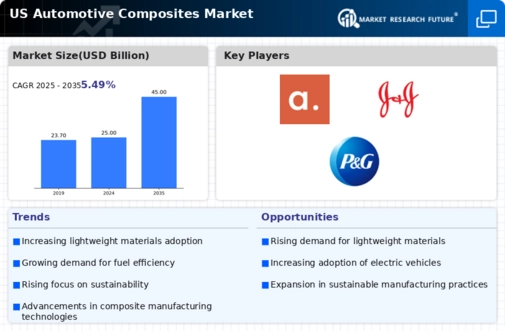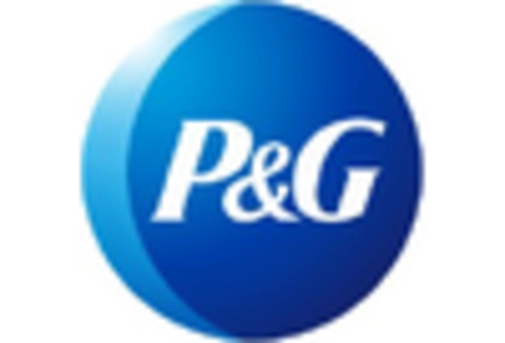US Automotive Composites Market Summary
The US Automotive Composites market is projected to grow from 25 USD Billion in 2024 to 45 USD Billion by 2035, indicating a robust expansion.
Key Market Trends & Highlights
US Automotive Composites Key Trends and Highlights
- The market is expected to experience a compound annual growth rate (CAGR) of 5.49% from 2025 to 2035.
- By 2035, the market valuation is anticipated to reach 45 USD Billion, reflecting a significant increase from the base year.
- In 2024, the market is valued at 25 USD Billion, showcasing the current scale of the automotive composites sector.
- Growing adoption of lightweight materials due to increasing fuel efficiency regulations is a major market driver.
Market Size & Forecast
| 2024 Market Size | 25 (USD Billion) |
| 2035 Market Size | 45 (USD Billion) |
| CAGR (2025 - 2035) | 5.49% |
Major Players
Apple Inc (US), Microsoft Corp (US), Amazon.com Inc (US), Alphabet Inc (US), Berkshire Hathaway Inc (US), Meta Platforms Inc (US), Tesla Inc (US), Johnson & Johnson (US), Visa Inc (US), Procter & Gamble Co (US)














Leave a Comment